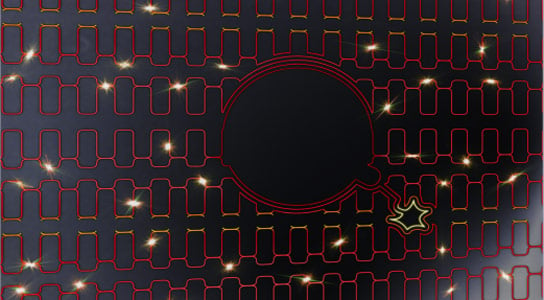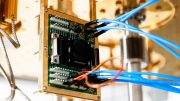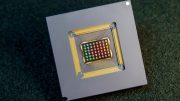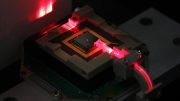
Engineers have created a chip-scale device that employs the wave-particle duality of single photons for interaction-free measurement, detecting objects without direct interaction. Credit: School of Engineering & Applied Science, Yale University
Engineers at the Yale School of Engineering & Applied Science have developed a chip-scale device that uses the wave-particle duality of single photons to sense the presence of an object without interacting with it – a technique known as “interaction-free measurement.”
“Our device uses silicon photonics to create interaction-free measurement on an integrated chip—something previously only accomplished on the much larger scale of traditional bulk optics,” said Hong Tang, associate professor of electrical engineering, physics & applied physics and principal investigator of the research published October 13 in the APS journal Physical Review A.
The device utilizes a single photon’s ability to exhibit the properties of both a particle and a wave—a central concept of quantum mechanics known as wave-particle duality. This theory recognizes that quantum particles exhibit continuous wave-like movement through space, yet can paradoxically also occupy a definable specific location, like a particle.
In an interaction-free measurement, quantum particles could take one of the two distinct paths in an interferometer or both. However, if an object is placed on one of those paths, the quantum particles will choose a different path to avoid interaction with the object with certain probability.
“It seems a counterintuitive phenomena, but the quantum particle avoids the object without interacting with it, essentially sensing the object without looking at it,” said Xiao-Song Ma, lead author of the study. “Our device takes advantage of this behavior by recognizing when a path is being avoided, allowing us to also sense the presence of the object without any interaction.”
The Yale device was able to recognize such multipath interference with visibility above 98% and an interaction-free measurement efficiency of up to 68.2%—a result the team hopes to improve through further refinements.
“Integrated photonics is a promising approach to realize quantum information processing,” said Ma. “We hope that devices like this will realize that promise to provide significantly improved communication security as well as exponential speed-up in computing certain class of problems.”
Reference: “On-chip interaction-free measurements via the quantum Zeno effect” by Xiao-song Ma, Xiang Guo, Carsten Schuck, King Y. Fong, Liang Jiang and Hong X. Tang, 13 October 2014, Physical Review A.
DOI: 10.1103/PhysRevA.90.042109








Is this a way to circumvent Heidenberg’s uncertainity principle? If by using this technique you determine the exact position of a particle without interfering with it, and at the same time high energy photons are used to pinpoint accurately its velocity, wouldn’t you know both the particle’s position and velocity at the same time?
Sorry for the typo, it´s Heisenberg of course!